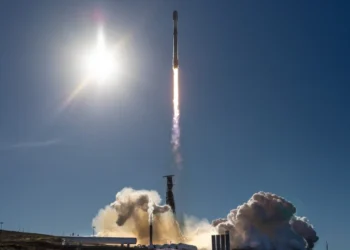In a concerning development for climate scientists and environmentalists worldwide, new data has revealed that carbon dioxide (CO₂) levels in Earth’s atmosphere have reached an all-time high, marking a critical milestone in the ongoing climate crisis.
According to scientists from the renowned Scripps Institution of Oceanography in San Diego, the monthly average concentration of CO₂ surpassed 430 parts per million (ppm) for the first time in recorded history in May 2025. The figure, precisely recorded at 430.2 ppm, represents the highest level observed since systematic measurements began 67 years ago—a period that has witnessed a dramatic escalation in greenhouse gas emissions due to human activity.
Understanding the Significance: What Does 430 ppm of CO₂ Mean?
Carbon dioxide is a heat-trapping greenhouse gas that plays a central role in global warming and climate change. While CO₂ is naturally present in the atmosphere and is essential for plant life and ecological balance, excessive concentrations are deeply problematic.
A level of 430 ppm means there are 430 molecules of CO₂ for every one million molecules of air. Though this might sound insignificant, even small changes in CO₂ concentration can have profound effects on Earth’s climate. Prior to the industrial revolution, atmospheric CO₂ levels hovered around 280 ppm. The dramatic rise to 430 ppm represents a 54% increase, driven largely by the burning of fossil fuels, deforestation, and industrial activities.
Historical Context: 67 Years of CO₂ Monitoring
The continuous monitoring of CO₂ began in 1958 at the Mauna Loa Observatory in Hawaii under the leadership of scientist Charles David Keeling. The resulting data, famously known as the Keeling Curve, has become one of the most iconic representations of human impact on the environment.
In the early 1960s, CO₂ levels were around 317 ppm. Since then, the curve has shown a steady and often accelerating rise. The jump to 430 ppm in May 2025 is a continuation of that trend—but it also sets a new and troubling record.
This threshold signals more than just a statistical milestone—it reflects a worsening trajectory for the planet’s climate system.
How CO₂ Triggers Global Warming
Carbon dioxide contributes to global warming by trapping infrared radiation from the Earth’s surface, preventing it from escaping into space. This phenomenon, known as the greenhouse effect, leads to rising temperatures on Earth.
The more CO₂ that accumulates in the atmosphere, the more heat is retained. This results in a cascade of climate impacts:
- Melting of polar ice caps and glaciers
- Rising sea levels
- More intense heatwaves, storms, and droughts
- Changes in ecosystems and biodiversity loss
- Disruption of agriculture and food security
At 430 ppm, scientists warn that we are approaching critical climate tipping points, beyond which reversing environmental damage may become nearly impossible.
Health Consequences of Elevated CO₂ Levels
While the environmental impact of CO₂ is widely known, its direct effect on human health is less commonly discussed—but equally alarming.
According to health experts, high concentrations of carbon dioxide can lead to a variety of medical problems, particularly in enclosed or poorly ventilated spaces. These include:
- Cognitive Impairment: Elevated CO₂ levels can reduce brain function, leading to problems with decision-making, concentration, and memory.
- Fatigue and Lethargy: High CO₂ concentrations can cause physical exhaustion and mental fog.
- Headaches and Dizziness: A common early symptom of CO₂ exposure, particularly in office environments.
- Respiratory Issues: People with asthma or other respiratory conditions may find their symptoms aggravated.
- Nausea and Loss of Consciousness: In extreme cases, CO₂ buildup can be fatal, although such levels typically occur in industrial accidents or confined spaces.
Though ambient CO₂ levels outdoors remain safe for direct human exposure, the implications of such high atmospheric CO₂ for health, especially in urban and indoor environments, are concerning.
Global Response: What Are Scientists and Policy Makers Saying?
The new data from Scripps has prompted renewed calls for urgent climate action. Environmental organizations, climate scientists, and public health experts alike are warning that time is running out to curb greenhouse gas emissions and stabilize the climate.
Dr. Ralph Keeling, the son of Charles David Keeling and current director of the Scripps CO₂ Program, commented:
“Crossing the 430 ppm mark is a sobering reminder that the climate crisis is accelerating. Each fraction of a ppm matters. It’s a signal that we’re still moving in the wrong direction, despite all our knowledge and capabilities.”
The United Nations’ Intergovernmental Panel on Climate Change (IPCC) has repeatedly warned that to limit global warming to 1.5°C above pre-industrial levels—the threshold agreed upon in the Paris Climate Accord—emissions must be halved by 2030 and reach net-zero by 2050.
At current levels, scientists estimate that we could breach the 1.5°C limit within the next decade, bringing with it irreversible damage to ecosystems and widespread human suffering.
Causes of Rising CO₂ Levels
The rise to 430 ppm has been attributed to a range of human activities, including:
- Burning of Fossil Fuels: Transportation, electricity generation, and industrial processes account for the bulk of CO₂ emissions.
- Deforestation: Trees absorb CO₂, and massive deforestation in the Amazon, Africa, and Southeast Asia has significantly reduced Earth’s natural carbon sinks.
- Agricultural Practices: Intensive farming and livestock rearing contribute to greenhouse gas emissions.
- Urbanization: Expanding cities and increased energy demand exacerbate carbon output.
Despite international efforts to reduce emissions, global CO₂ output continues to rise, indicating that current climate policies are insufficient or poorly implemented.
What Can Be Done: Solutions and Strategies
Tackling the CO₂ crisis will require multi-faceted, global cooperation. Here are some of the most urgent strategies experts are recommending:
1. Transition to Renewable Energy
Replacing coal, oil, and gas with solar, wind, and hydroelectric power is vital. Countries must accelerate the shift to clean energy systems.
2. Protect and Expand Forests
Reforestation and afforestation can restore natural carbon sinks. Preserving existing forests is just as important as planting new ones.
3. Carbon Capture Technologies
Investment in carbon capture and storage (CCS) can help remove existing CO₂ from the atmosphere and store it underground.
4. Promote Sustainable Agriculture
Reducing fertilizer use, improving land management, and supporting regenerative agriculture can lower emissions from the food sector.
5. Strengthen Climate Policy
Governments must enforce emission targets, carbon taxes, and environmental regulations to hold polluters accountable.
Public Awareness and Individual Action
While large-scale government and industry reforms are crucial, individual actions also matter. Here’s how people can contribute to reducing CO₂ emissions:
- Use energy-efficient appliances
- Reduce car travel and opt for public transport or cycling
- Eat less meat and waste less food
- Support local and sustainable brands
- Plant trees and support reforestation programs
- Advocate for climate policies in your community
Conclusion: A Call to Action as CO₂ Levels Reach Critical Threshold
The revelation that carbon dioxide levels have exceeded 430 ppm for the first time in human history is a stark wake-up call. This is not just a scientific milestone—it’s a clear warning that the climate crisis is intensifying, and we are running out of time to reverse the damage.
Climate experts urge that collective global action is needed now more than ever. The longer humanity delays meaningful changes, the greater the risks become—not just for the environment, but for our health, economies, and future generations.
As we move deeper into 2025, the record-setting CO₂ levels should serve as a powerful motivator to accelerate climate action at every level—from international treaties to personal choices. The Earth’s future, quite literally, depends on it.

























